Ikepod Watches are In… Again!
Ikepod is a watch brand that has had its fair share of ups and downs. Founded in 1994 by designer Marc Newson and currently in its third generation of ownership, Ikepod is proving it has staying power thanks in large part to its instantly recognizable watch designs characterized by pebble-shaped lug-less cases, imposing proportions, and distinctive hands punctuating often-minimalist dials. If you look at the modern independent watchmaking landscape, you’ll find more than a few design traits that can be traced back to old-school Ikepod watches. The idiosyncratic hands are just one example. Not only that, but some now-popular watch marketing strategies, such as high-profile collaborations, tapping artists for design inspiration, eye-popping prices for non-precious metal pieces, and limited edition runs, were all part of Ikepod’s playbook well before it became the norm in the industry.
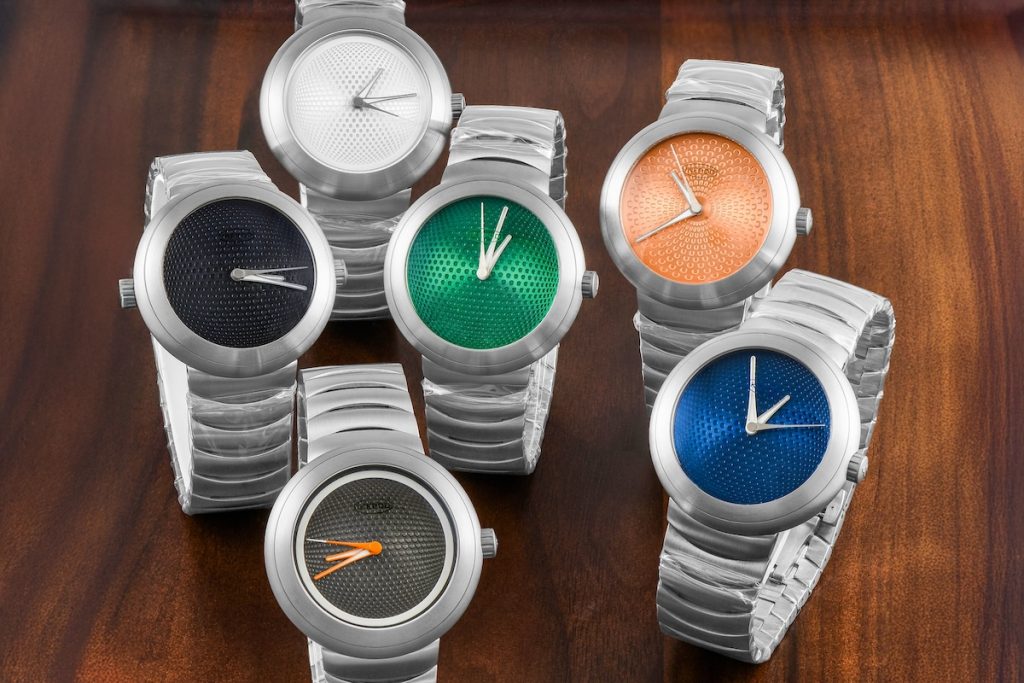
It’s clear that Ikepod’s vision and approach have shaped the watch industry, particularly the high-end independent segment. And now, under new leadership that’s focused on more affordable price points and accessibility, Ikepod is positioned to achieve even broader appeal among watch enthusiasts. Whether you’re new to Ikepod or looking to rediscover its legacy, read on for a deep dive into the history, evolution, and current standing of this trailblazing watch brand.
Ikepod History
The history of Ikepod watches can be segmented into three distinct eras.
Gen 1: The Origins (1994–2006)
Ikepod was founded in 1994 by renowned industrial designer Marc Newson and businessman Oliver Ike, and established itself as a groundbreaking force in the watch industry. The brand’s debut watch, the Seaslug, set the tone for its unique aesthetic, featuring a lug-less, UFO-shaped case with a convex bezel that redefined traditional watch design. Soon after, the Hemipode, which was a large, monocoque watch with integrated silicone straps, cemented Ikepod’s reputation as a design-forward brand. With its futuristic look, the Hemipode became the first “concept watch,” bringing attention to the designer behind it — a rarity in the 1990s.
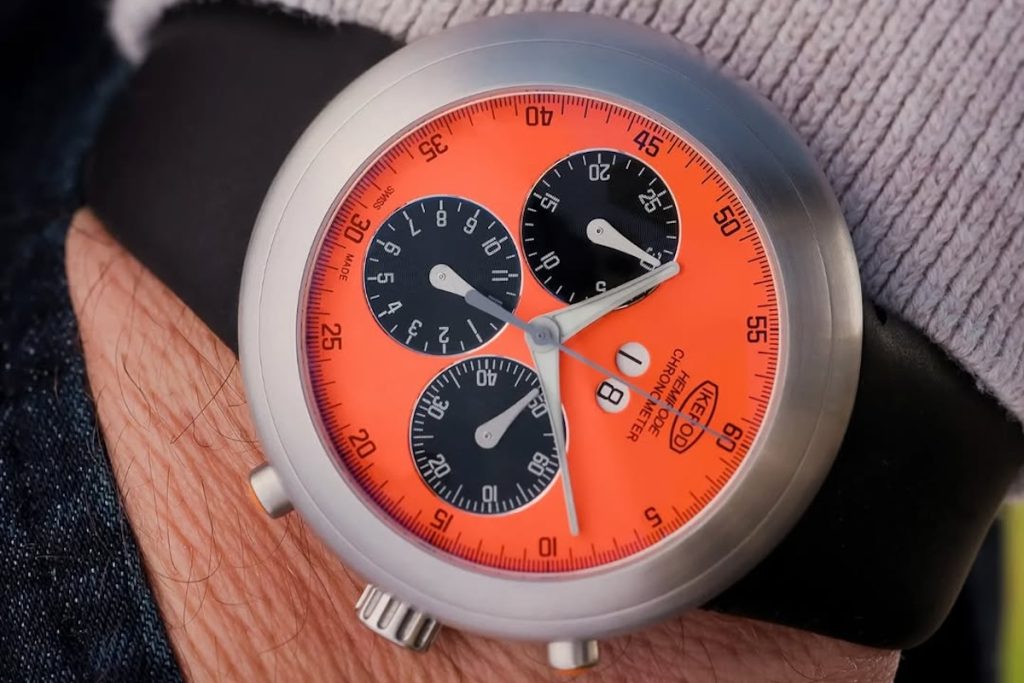
During its first generation, Ikepod released a series of unconventional watches that emphasized craftsmanship, large cases, and innovative shapes. Models like the Manatee and Megapode pushed the boundaries of what watches could look like while introducing trends like oversized cases and limited-edition runs. Despite gaining a loyal following, Ikepod faced financial difficulties and declared bankruptcy in 2006, putting the brand on hold.
It’s estimated that anywhere from 5,000 to 10,000 Ikepod Gen1 watches were produced from 1994 to 2006.
Gen 2: A Luxury Renaissance (2008–2012)
Ikepod was revived in 2008, backed by art collector Adam Lindemann with Marc Newson remaining involved as the creative force behind the brand. This era saw a push toward exclusivity, with designs like the KAWS Edition and Jeff Koons collaborations positioning Ikepod at the intersection of watches and art. The Horizon and Solaris collections showcased Ikepod’s minimalist ethos while embracing high-end craftsmanship, featuring vibrant dials inspired by optical art.

Despite the renewed focus on luxury and the brand’s artistic collaborations, Ikepod struggled to find its footing in an increasingly competitive market. Its expensive offerings, which included CHF 25,000 hourglasses, appealed to a niche audience but failed to sustain long-term momentum. In 2012, Ikepod once again shuttered its operations and Marc Newson departed, leaving its future uncertain.
More about KAWS:
AP x KAWS Royal Oak Concept Tourbillon “Companion”
Gen 3: The Modern Revival (2018–Present)
Ikepod’s third generation began in 2018 with a fresh approach. Under the helm of Christian-Louis Col, the brand aimed to democratize its designs by offering more affordable models without compromising on quality. Relaunching through Kickstarter, Ikepod introduced quartz-powered watches like the Duopod and Chronopod, priced significantly lower than their predecessors. This strategy proved successful, as the campaign raised over CHF 400,000 and sold 1,000 watches globally.
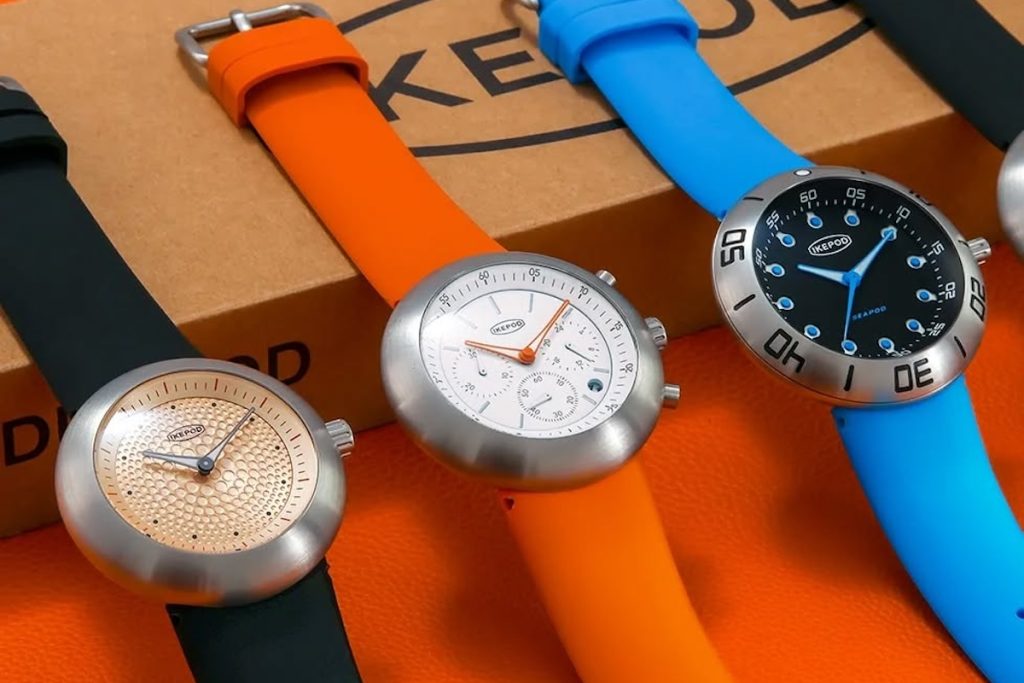
Ikepod has since expanded its lineup to include automatic models like the Megapod, Seapod, and Horopod retaining the brand’s aesthetic while also updating functionality and mechanics. Focusing on accessible pricing and design innovation, Ikepod is carving out a place in the modern watch market while staying true to its design-centric roots.
Popular Gen1 Ikepod Watches Explained
There have been plenty of Ikepod watch models released over the last 30 years, each featuring distinct designs and features. Here’s a primer on key Ikepod watches from the first generation.
Ikepod Seaslug – Gen1
For a brief moment before “Ikepod,” the name stamped on early Seaslug watches was just “Pod.” Released in 1994, the Seaslug was Marc Newson’s take on a dive watch, designed with a bold, bowl-shaped case and smooth, organic contours. Its nearly convex bezel and lug-less design were unlike anything else on the market at the time. The watch case was fashioned from stainless steel and measured 39mm in diameter.
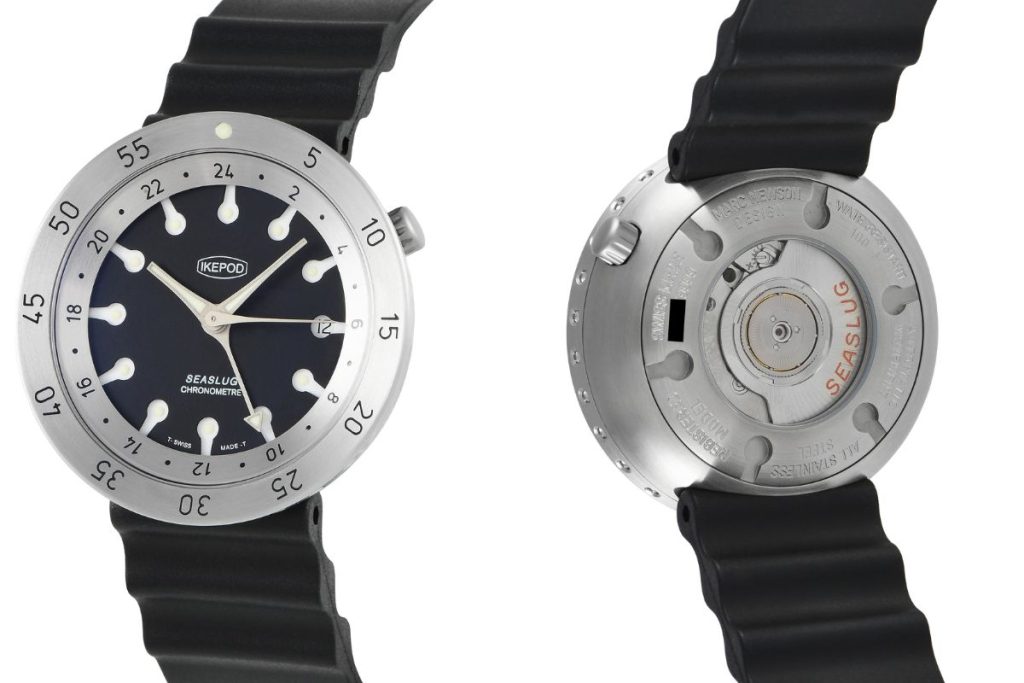
The Seaslug combined classic dive features, such as a unidirectional bezel, with a GMT function (facilitated by a second, internal bezel ring). Powered by a chronometer-certified ETA 2893-2 automatic movement, it was typically paired with a rubber strap, though stainless steel bracelets were occasionally available. Ikepod initially intended to cap the production of the Seaslug at 9,999 pieces, but ultimately they didn’t even make that many.
Ikepod Hemipode – Gen1
By 1997, Ikepod ventured into even more daring territory with the Hemipode. Widely regarded as Ikepod’s signature model, the Hemipode brought the company’s uncompromising design philosophy to life. With its bold, 44mm monobloc case and lug-less silhouette, the Hemipode was as much a sculpture as it was a watch. Marc Newson likened it to a “concept watch,” pushing boundaries and challenging traditional watchmaking norms.
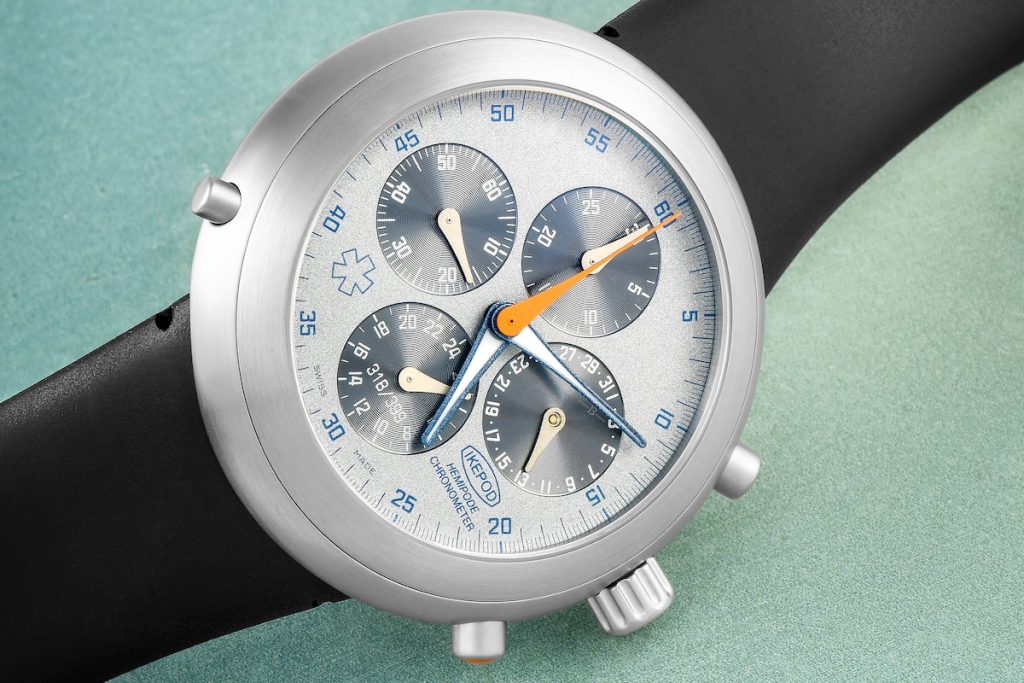
The UFO-shaped case, built from two main components — a main body and a bezel screwed on top — required assembling the movement, dial, and hands from the top down. The crystal sat perfectly flush with the seamless curvature of the case, creating a pure, uninterrupted form that was difficult to manufacture at the time. Available in materials ranging from titanium to pink and yellow gold, the Hemipode’s presence on the wrist was undeniable, especially in the precious metal variants.
The Hemipode housed an ETA 7750 movement with a Dubois Dépraz chronograph module and was offered in several variations, including a chronograph, a GMT chronograph, and a Grande Date. The curved caseback includes a little window for a peak of the front-loaded movement inside the case. The integrated silicone strap, another Ikepod hallmark, further emphasized the watch’s streamlined style.
Today, the Hemipode is a collector favorite and recognized as one of the most iconic models in independent watchmaking history. Fun fact: Kanye West was spotted in 2020 wearing a solid yellow gold Ikepod Hemipode watch.
Ikepod Megapode Chrono – Gen1
Introduced in 1999, the Megapode Chrono certainly lived up to the “mega” part of its name, clocking in at 46.8mm. Designed as a pilot’s watch, the Megapode was an experiment that pushed the boundaries of both size and functionality. The pebble-shaped case was crafted from titanium — a material rarely used in watchmaking at the time — which made the Megapode as lightweight as it was large.

Its unconventional dial design, featured two logarithmic scales, capable of calculating fuel consumption, distances, and unit conversions, along with dual-time functionality and a rotating inner bezel. While the inaugural Megapode Chrono had a dial that combined black, yellow, and gray, other versions followed with all-white or all-black dials.
The chronograph pushers were positioned on the left side of the case, a deliberate choice that enhanced both ergonomics and visual balance. Another fun fact: Max Büsser, founder of MB&F not only owns an Ikepod Megapode, which he showed in a Hodinkee Talking Watches video, but he also said “I just don’t want people to forget that the original Ikepod was a trailblazer in our industry.”
Ikepod Megapode – Gen1
A year later, Ikepod also introduced a simpler three-hand Megapode watch with a 6 o’clock date window, available in several colors.
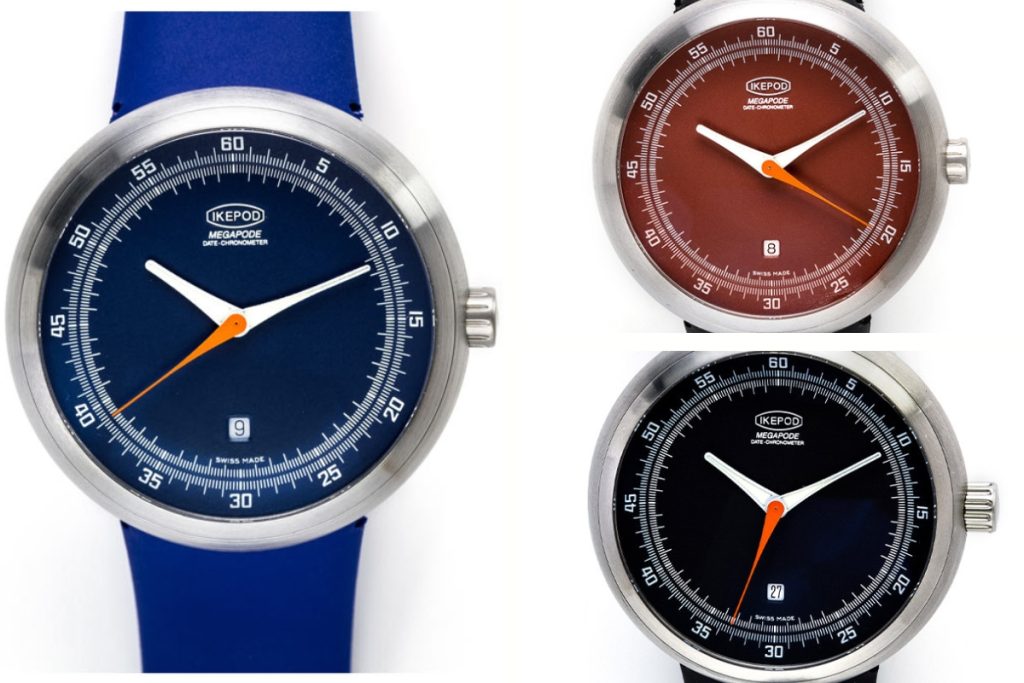
Ikepod Manatee – Gen1
The Manatee, introduced in 2001, was Ikepod’s first rectangular watch. Departing from the brand’s usual round cases, the Manatee featured a unique rectangular shape with rounded edges, balancing assertive geometry and organic curves. Its integrated strap ran directly through the case, maintaining Ikepod’s signature lug-less aesthetic. If this looks familiar, it’s important to note that Marc Newson worked with Jony Ive to design the Apple Watch.

Equipped with an ETA 2893-1 movement, the Manatee included a practical inner bezel with world-time functionality and was available in four dial colors. While the Manatee remains an overlooked piece in Ikepod’s archives, it’s a significant piece in that it influenced the design of the world’s most famous smartwatch.
Popular Gen2 Ikepod Watches Explained
After a hiatus of less than two years, Ikepod’s second generation of watch’s largely carried on the same aesthetic.
Ikepod Horizon – Gen2
Introduced during Ikepod’s second generation in 2008, the Horizon built on the brand’s signature Hemipode case design while emphasizing artistic expression. Available in 42mm or 44mm sizes, the Horizon featured a striking Victor Vasarely optical art-inspired dial that gave the illusion of being convex and three-dimensional.

The Horizon did away with a seconds hand, allowing the clean dial design to take center stage. Initially produced in limited runs of titanium, rose gold, and platinum, the model also became a canvas for special collaborations, such as with the artists KAWS and Jeff Koons.

Fewer than 300 units of the Ikepod Horizon were produced, including the KAWS — 104 KAWS x Ikepod Horizon watches are known to exist.
Solaris – The Last of the Non-Pebble Ikepod Watches
Also introduced in 2008 and named after Andrei Tarkovsky’s film, the Solaris was Marc Newson’s last watch design for Ikepod before the brand’s second bankruptcy in 2012. The rectangular case with rounded edges housed two independent dials on either side. each powered by its own quartz movement. This reversible configuration allowed for dual time zones. Most of the Solaris cases were made in ceramic (black, white, or a combination of both), however, some yellow gold examples are also available.
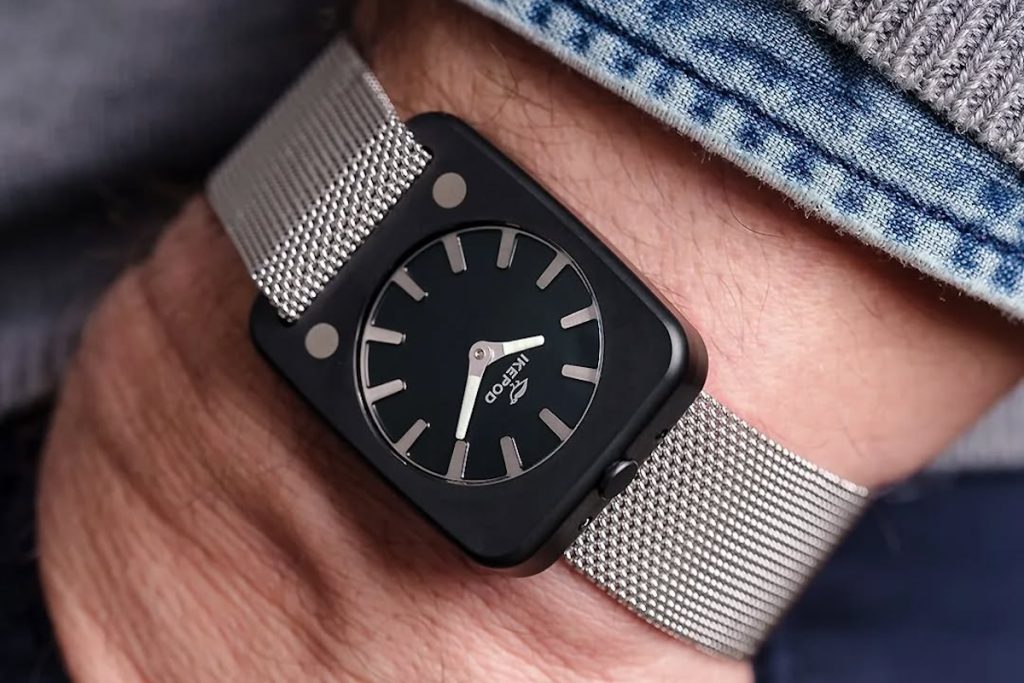
The Solaris was paired with a mesh strap looped directly into the case, which again, clearly influenced the design of the Apple Watch. Fewer than 300 pieces of the futuristic and minimalist Solaris were produced.
Generation 3 Ikepod Watches Explained
We are currently in the third era of Ikepod watches. Whereas the first generation was marked by out-of-the-box designs and the second generation was known for exceedingly high prices and limited collaborations, the third generation offers an appealing combination of the brand’s iconic designs, collaborations with industry insiders, thoughtful updates, and more accessible price points. Contemporary Ikepod is a design-driven brand.
Kickstarter-Era Ikepod Watches: Duopod & Chronopod
When Ikepod relaunched in 2018, the new ownership introduced two flagship models, the Duopod and Chronopod, to carry forward the brand’s distinct design language. Both watches draw inspiration from the Hemipode and the Megapode, but reinterpret them for a new generation of collectors with updated proportions and modernized mechanics. The brand tapped no other than Emmanuel Gueit — the man behind the Royal Oak Offshore — to design dials for the Duopod and Chronopod models.
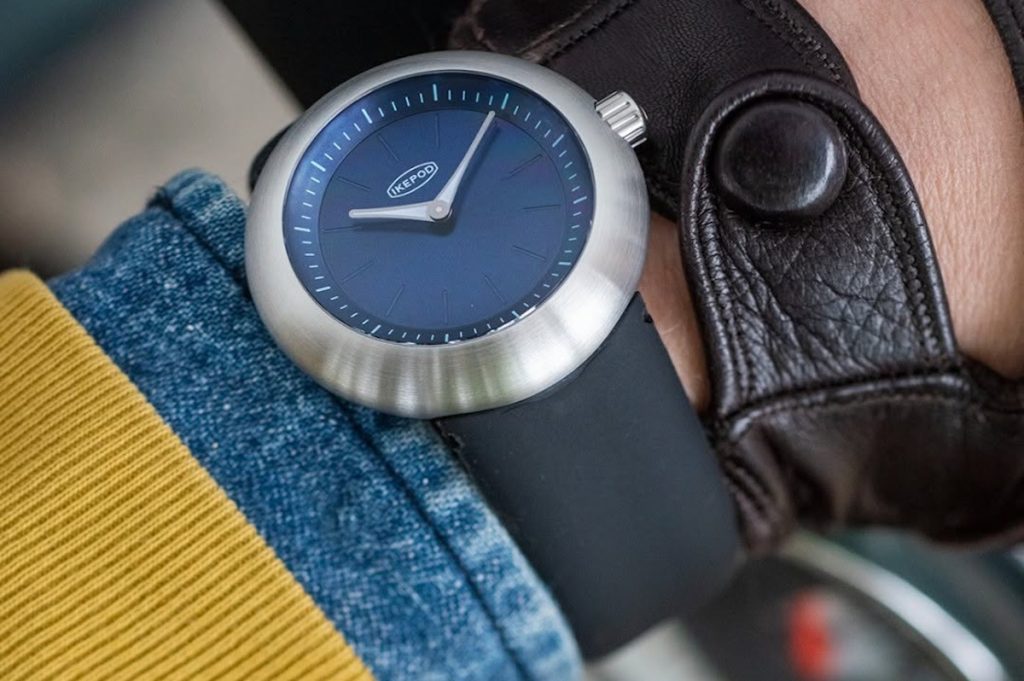
The Duopod is a time-only model, characterized by its sleek pebble-shaped 42mm case and minimalistic dial. Available in a range of bold colors and materials, the Duopod was designed to offer Ikepod’s hallmark design at an approachable price point, while still retaining the brand’s signature lug-less case and streamlined silhouette. Powered by a quartz movement, the Duopod emphasizes simplicity and wearability.
On the other hand, the Chronopod adds a chronograph complication, offering a sportier take and increasing the size to 44mm. The Chronopod retains the same lug-less, pebble-shaped case, as well as bold dial options but incorporates a trio of subdials for elapsed time measurement. Like its sibling, the Chronopod is also powered by a quartz movement, ensuring reliability and accuracy at a more accessible price point. Both the Duopod and Chronopod do not include center seconds hand, which means it’s not immediately evident these are quartz watches.
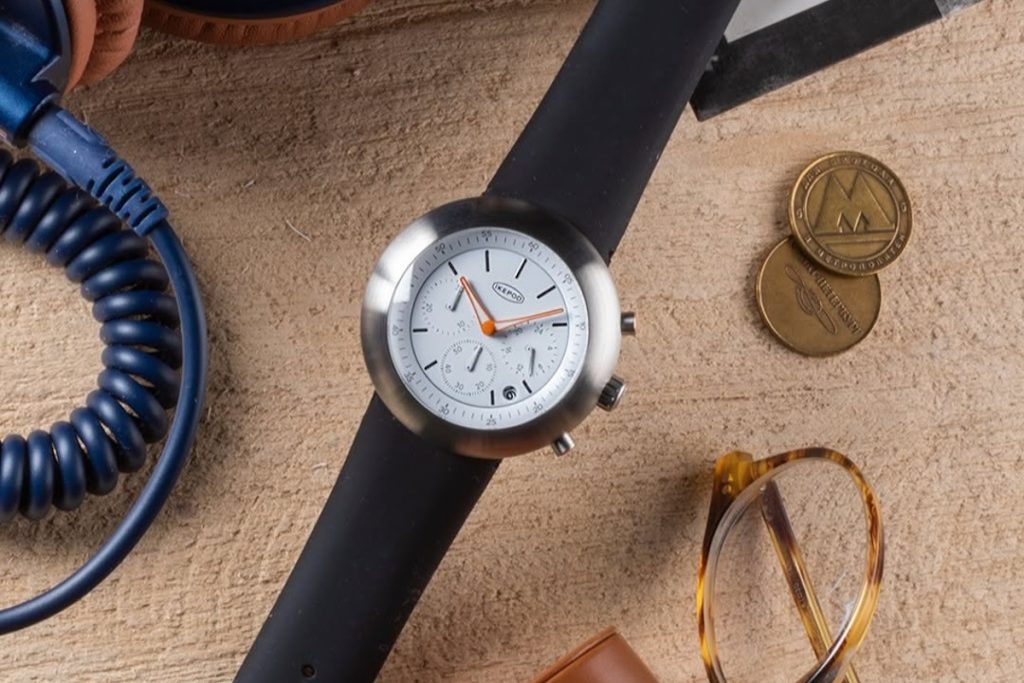
Although 42mm and 44mm sound large, these watches actually wear smaller than their dimensions suggest thanks to case design and the lack of lugs. The 42mm Duopod wears more like a traditional 39mm watch while the 44mm Chronopod feels more like a 41mm chronograph.
Megapod
Following the success of the quartz Duopod and Chronopod’s Kickstarter campaign, Ikepod announced a new model for the campaign in 2020: the Megapod with an automatic movement. While the Gen3 Megapod clearly offered the same vibe as the Gen1 Megapode time-only models, there were plenty of updates for today’s audience.
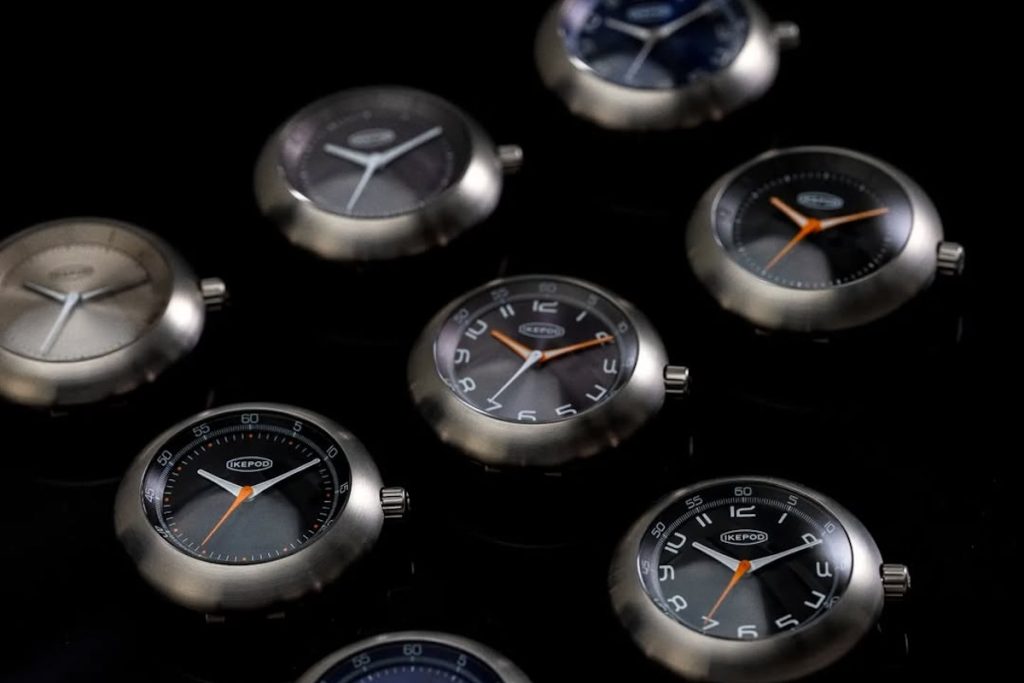
The new Megapod retained the classic 46mm pebble-shaped, lug-less case that has become synonymous with Ikepod’s design language. The dials, of which there were plenty of variations to choose from, were designed by Alexandre Peraldi, a veteran of Richemont Group, more specifically Baume & Mercier. Powered by Miyota movements, the dials feature three hands (no date), leaning into Ikepod’s signature minimalist approach. The movements are visible from the display caseback.
In 2024, Ikepod announced the discontinuation of the Megapod but not before releasing a limited series of hourglass-themed models — a nod to Marc Newson’s iconic Ikepod hourglass creations.
Seapod
The Seapod, launched in 2021, reintroduces Ikepod to the dive watch category with a design that feels familiar yet distinctly modern. Created by Fabrice Gonet (who includes MB&F on his resume, among others), the Seapod draws inspiration from the Seaslug and Hemipode while establishing its own identity as a contemporary dive watch.
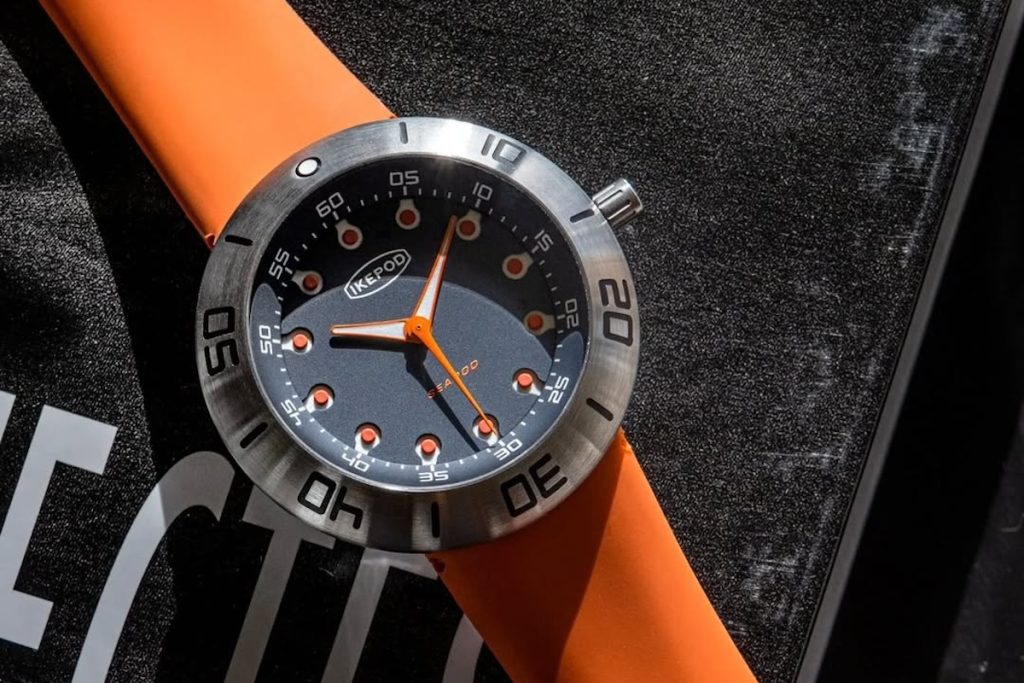
The 46mm case stays true to Ikepod’s lug-less, pebble-like design language and is water-resistant to 200 meters. There are titanium, bronze, and black PVD versions of the Seapod. As a dive watch, there’s a rotating dive bezel, and the dial design clearly borrows from the original Seaslug. The integrated silicone strap completes the watch, staying true to Ikepod’s cohesive and minimalist design ethos and Miyota 9039 automatic movements serve to power the watches. Since the initial announcement of the Seapod, Ikepod has expanded the collection with some limited editions including a “PIXPAT” pixelated camo-themed one that looked like it was created in a Minecraft game and a Hello Kitty version.
Skypod
The Skypod, Ikepod’s modern take on the original Megapode Chrono pilot watch, includes dials designed by Mårten Claesson, Eero Koivisto, and Ola Rune of the Swedish design and architecture studio, Claesson Koivisto Rune.
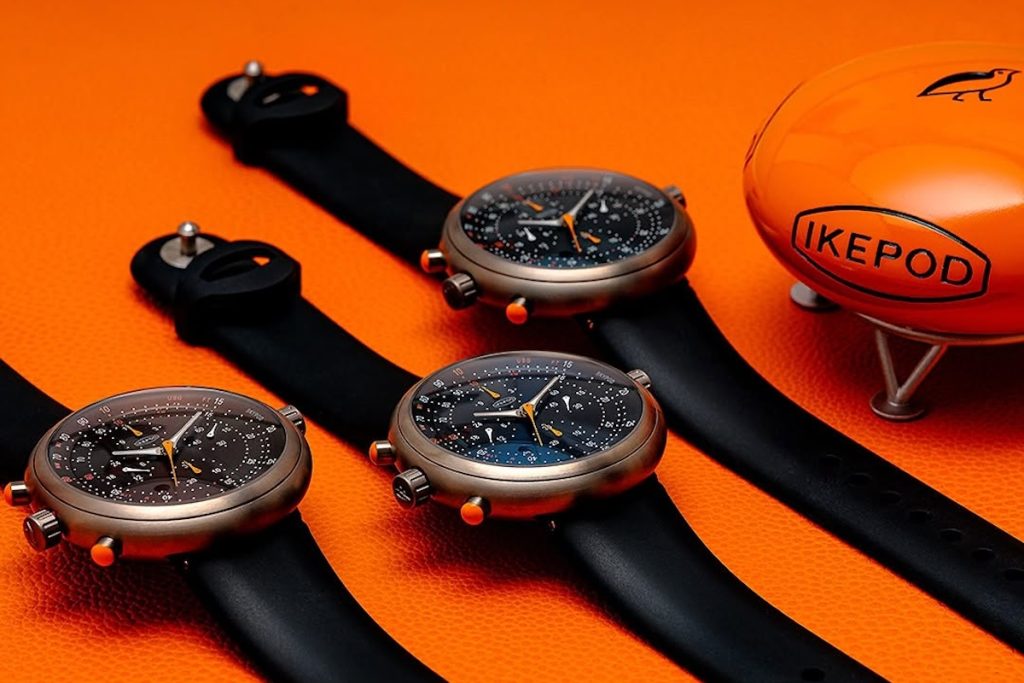
Again, we see a 46mm pebble-shaped case, this time crafted exclusively in titanium. The dials, originally available in black or blue but later joined by a 30th-anniversary champagne one, include vibrant orange accents. The chronograph pushers remain on the left side of the case just like on the original and the watches are powered by New Old Stock (NOS) Swiss La Joux-Perret movements.
Horopod
The newest collection to join Ikepod’s Gen3 lineup is the Horopod, a piece inspired by the Gen1 Hemipode and Gen2 Horizon and refreshed by watch designer Adrian Buchmann. The Horopod takes the familiar Hemipode case silhouette (that now permeates throughout most of Ikepod’s offerings) and the optical-art-inspired dial of the Horizon and repackages it into a watch for today’s enthusiasts powered by automatic NOS ETA 2824 movements.

The bulbous cases, which are made of titanium, measure 44mm in diameter, however, they wear more like a 41mm watch. Dial options of these time-only models are plentiful, all punctuated with Ikepod’s signature handset (which may look familiar as similar ones have appeared on the likes of FP Journe and Ming watches) and decorated with repetitive patterns, which vary by model and include optical art, raised dots, and floral motifs.
The Horopod is perhaps the most “Ikepod” of the modern Gen3 collection — a distillation of all the design traits that made the brand’s watches so recognizable.
The Influence of Ikepod Watches
While Ikepod may not be a household name in the broader watch enthusiasm community, the brand’s influence on the watch landscape is undeniable. This 1990s brand was well ahead of its time experimenting with oversized dimensions, unconventional shapes, stark designs, collaborations with parties outside the watch industry, and creating limited edition pieces.

The next time you see a quirky or unorthodox watch (or strategy) from a high-end independent watchmaker, see if you can spot some features that could be traced back to Ikepod — because it’s likely that they’re there.


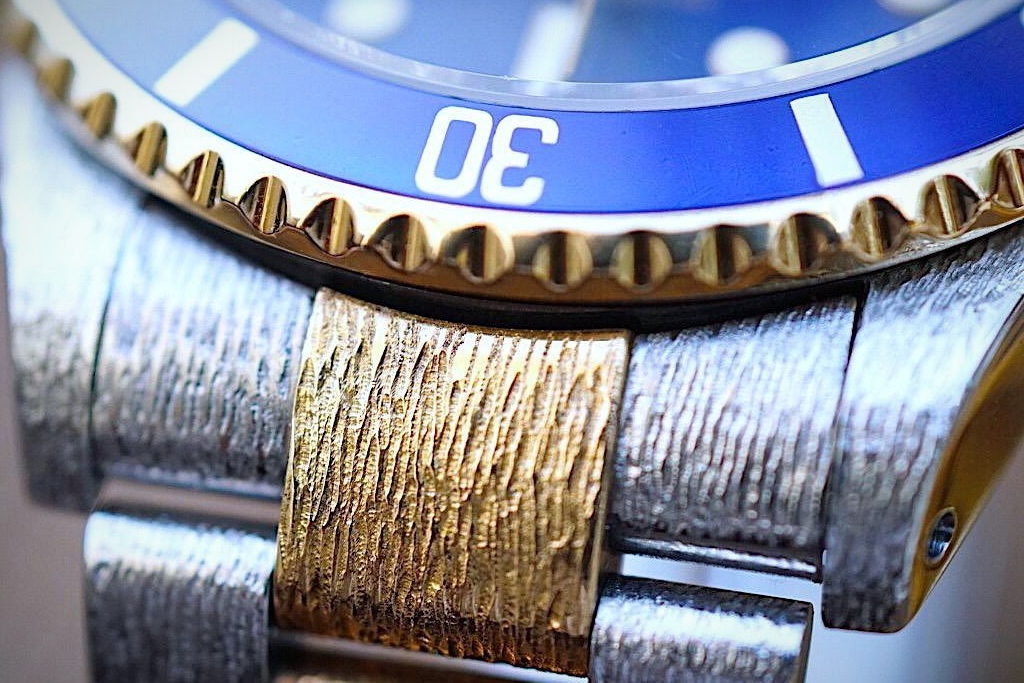
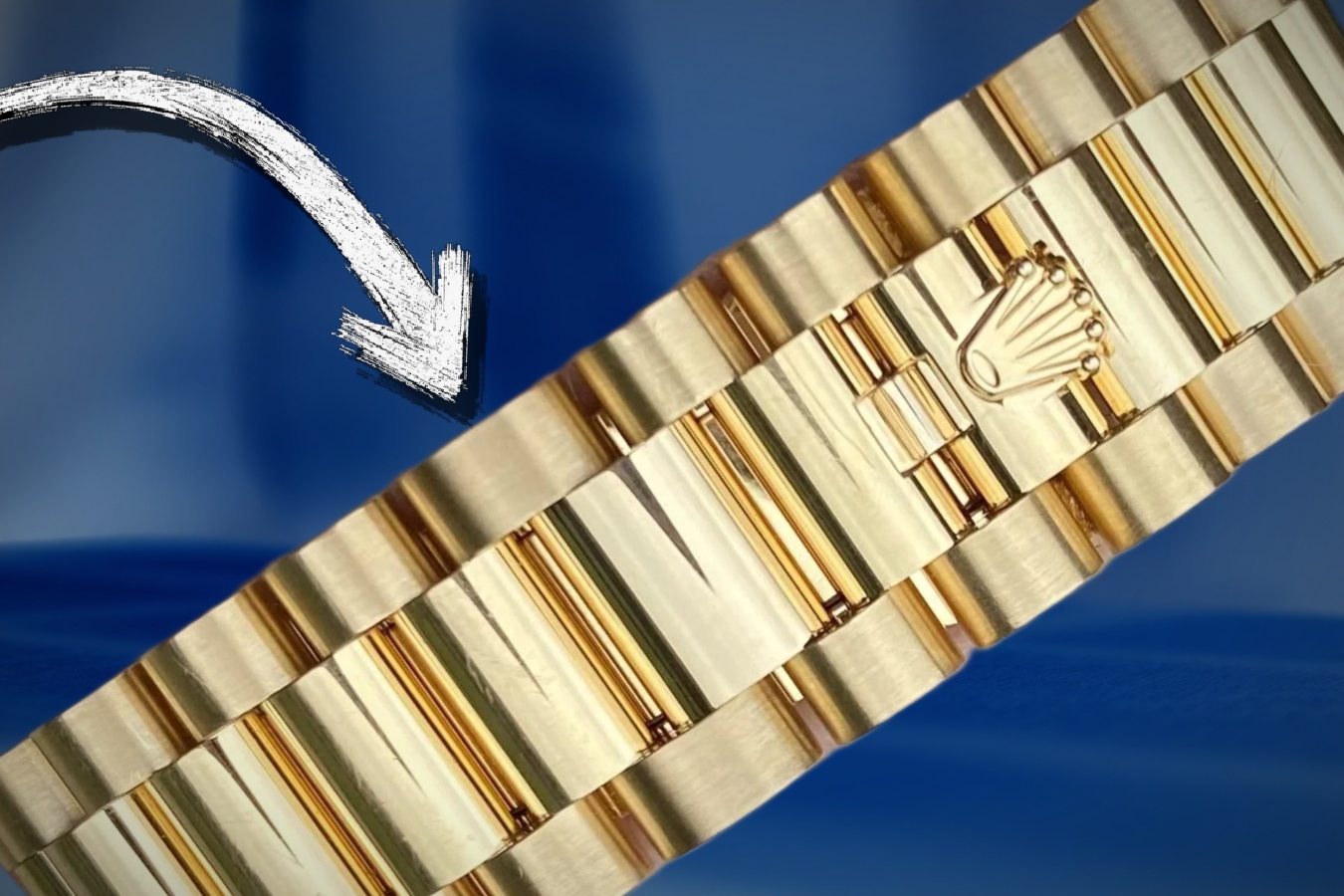



Leave a Reply